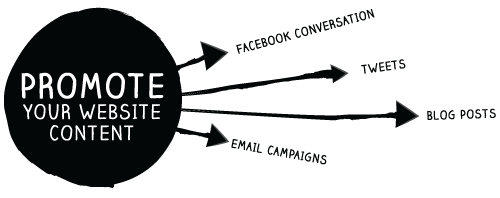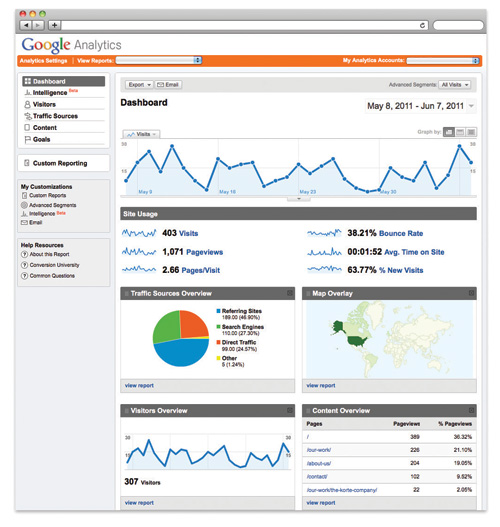This is the third of a series of three posts that will show you how to create a website that’s a REAL business tool. If you haven’t yet read part 1 or 2, I’d recommend starting there.
You’ve set goals for your site, planned your content with a site map and wire frames, hired a good copywriter that understands the difference between writing for print and web, handed over the reigns to your web design team for build-out and finally launched it.
Mission accomplished, right? Well…not exactly.
Let’s pretend you were marketing a product 20 years ago and you hired a big ad agency to build out a great campaign concept for your shiny new object so the world could learn all about it. They toiled away for months generating concepts, ideas, headlines and visuals. They wrote, directed and filmed a killer, Superbowl-caliber TV ad. And then let’s pretend that you never ran that ad. What kind of exposure would you get? How much awareness would you build? How would you connect with the hundreds or thousands or millions of potential customers out there? What kind of results or return on investment would you be looking at?
This situation is no different. You need to promote.
Promoting through content strategy
You have equipped yourself with a powerful tool. Your site has the beginnings of information that can bring value to your current customers and find you new ones. But you need to get people there.
You might be thinking, “Of course I could spend lots of advertising dollars to get people to my site – obviously”. But have you considered using what you already have in your pocket to generate traffic? The stuff that’s not so expensive at all. You’re a specialist in something, right? That’s why people hire you or buy your product. So in addition to what you’re selling, can you add more value for your customer by giving them something extra? If you’re an accounting firm, can you give away tax resources? If you’re a construction firm, can you provide white papers on what it means to be LEED-certified? If you’re a local Italian restaurant, can you post a recipe from time to time?
The key is to create content that your customer wants, and then to promote that content in the right places, with a sound strategy.
Email blasts, social media tools like Facebook, Twitter & LinkedIn, as well as blog posts can all be relevant pieces of that strategy. Using these channels may be intimidating and take a bit of learning if you’re not familiar (or even if you are familiar). But you can make it happen if you choose to commit.

As your site begins to fill up with more and more useful content, Google learns that it’s there. As people begin reading it and re-sharing it on their blogs and social networks, Google learns that it’s good stuff. When that starts to happen you gain credibility with Google and your search rankings jump. Here comes the awareness you were seeking.
Measuring against your goals, reacting and refining
Remember back at the beginning when you set those goals for your site? That wasn’t just an exercise to think through your planning process. We’re going to revisit those goals to see if your site is working.
Are you driving people to the right content on your website? Are visitors taking action on your calls-to-action? You’ll probably answer “yes” in many ways to these questions because you took the time to plan. But you can’t anticipate everything about how your visitors will navigate your site and react to your content. Not until it’s been live for a while and you’ve given them a chance to explore. (This is another reason why we emphasize getting it up and running as soon as you can).
Tools like Google Analytics (free) can help you analyze a wealth of data on your visitors. You can see what keywords they’re searching that are landing them on your site, what other sites are referring them to you, what pages they’re viewing/not viewing, their geography, and much more. You can even customize Analytics to measure the actions of your visitors against your specific goals. It’s a free tool, so take the time to learn how to use it to your advantage.

No matter how good you are at planning, you’ll probably need to adjust. Look at the data. Figure out where your site can improve. Determine where you can put new, more targeted pages and content. Think about how you can continue to promote that new content. And never stop this process.
Building and maintaining a great website is a lot of work. It’s an ongoing process, not a one-and-done job. That may not have been the case ten years ago. But right now isn’t ten years ago. It’s your responsibility as a marketer to plan, create and distribute good information for your customer to consume. Reel them in and show them that you’re a valuable and credible resource for them. Keep giving them what they want and they’ll come back.